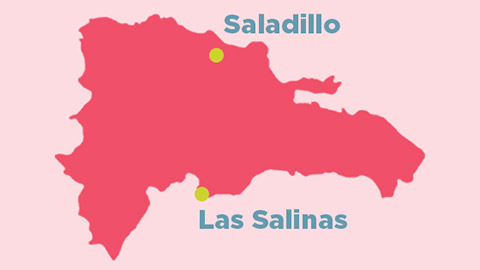Places where intersex is more common

Las Salinas and Saladillo are two towns in the Dominican Republic where an unusually high number of children—as many as 1 in 90--are born intersex. Locally, they are known as guabidós, güevotes, or muchihembras—girls who grow up to be men. Journalist Sarah A. Topol (2017) explains: “There are more than twenty kinds of D.S.D.’s (disorders of sex development), but the type prevalent in Las Salinas and Saladillo is called a 5-alpha-reductase deficiency,” or 5-alpha for short (Topol, 2017, p. 2 para. 2). The condition of 5-alpha causes children who are genetically male to be born with what looks like female genitalia. Topol (2017) continues:
“Not surprisingly, these children are often raised as girls — until the onset of puberty. At that point, as a second wave of testosterone surges through the body, their testicles descend, their penises may grow, and they begin physically to look like men.” (p. 2, para. 2)
Because the vast majority of babies born with 5-alpha in Las Salinas and Saladillo are not identified until puberty, they don’t undergo the kinds of surgery that are common for babies born intersex here in the U.S. This makes for an interesting place to explore one of the most persistent questions in debates over early surgery: what kinds of outcomes might occur without early intervention? Topol (2017) explains:
“One of the issues that surfaces again and again in the debate over early surgery is that we don’t know enough about intersex babies who grow up without intervention. There simply aren’t sufficient case studies to answer many of the most basic questions. Would such people regret not having had surgery? Would they be happier? Would it be easier if they grew up in a culture that was more flexible in its view of gender roles? What would society look like if intersex people were much more common, and if most intersex children were allowed to make their own decisions about their identity? [Las Salinas and Saladillo] may help to answer some of these questions . . . [making the towns] a kind of laboratory of gender fluidity, with a surprising range of outcomes.” (p. 2, para. 7)
While researching for Harper’s Magazine, Topol travelled to Las Salinas and Saladillo to explore the lives of individuals born intersex in these two Dominican communities. She talked with parents, neighbors, and fellow townspeople, and learned about the experiences and evolving identities of people living as “guabidós” through childhood, adolescence, and adulthood. What she found surprised her.
Featured Content
Learn more about the individuals who are profiled in the Harper’s Magazine article, and the different ways their community responds to their identities.
References:
Topol, S. (2017, August). Sons and daughters: The village where girls turn into boys. Harper’s Weekly. https://harpers.org/archive/2017/08/sons-and-daug
